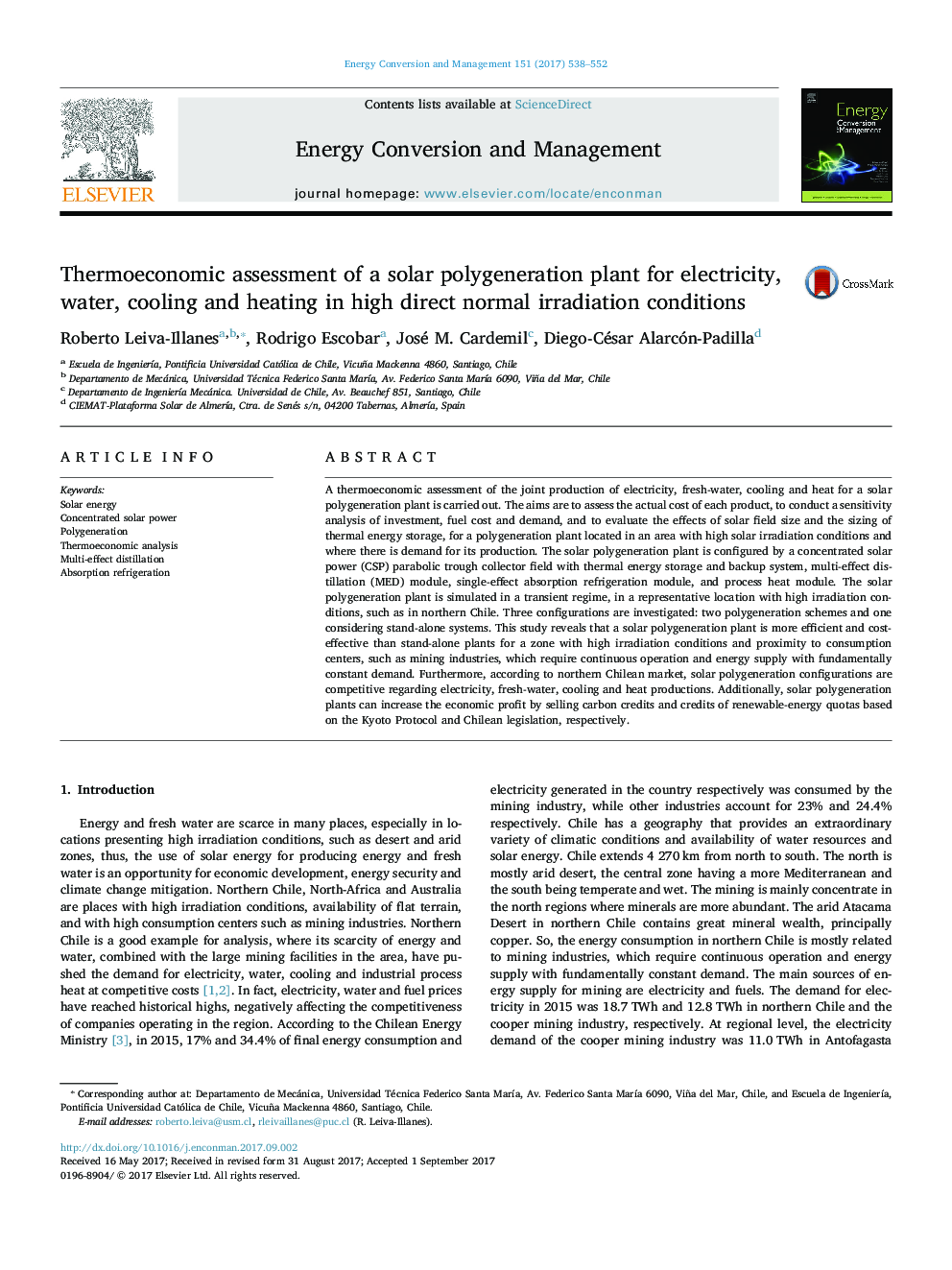| Article ID | Journal | Published Year | Pages | File Type |
|---|---|---|---|---|
| 5012391 | Energy Conversion and Management | 2017 | 15 Pages |
Abstract
A thermoeconomic assessment of the joint production of electricity, fresh-water, cooling and heat for a solar polygeneration plant is carried out. The aims are to assess the actual cost of each product, to conduct a sensitivity analysis of investment, fuel cost and demand, and to evaluate the effects of solar field size and the sizing of thermal energy storage, for a polygeneration plant located in an area with high solar irradiation conditions and where there is demand for its production. The solar polygeneration plant is configured by a concentrated solar power (CSP) parabolic trough collector field with thermal energy storage and backup system, multi-effect distillation (MED) module, single-effect absorption refrigeration module, and process heat module. The solar polygeneration plant is simulated in a transient regime, in a representative location with high irradiation conditions, such as in northern Chile. Three configurations are investigated: two polygeneration schemes and one considering stand-alone systems. This study reveals that a solar polygeneration plant is more efficient and cost-effective than stand-alone plants for a zone with high irradiation conditions and proximity to consumption centers, such as mining industries, which require continuous operation and energy supply with fundamentally constant demand. Furthermore, according to northern Chilean market, solar polygeneration configurations are competitive regarding electricity, fresh-water, cooling and heat productions. Additionally, solar polygeneration plants can increase the economic profit by selling carbon credits and credits of renewable-energy quotas based on the Kyoto Protocol and Chilean legislation, respectively.
Keywords
Related Topics
Physical Sciences and Engineering
Energy
Energy (General)
Authors
Roberto Leiva-Illanes, Rodrigo Escobar, José M. Cardemil, Diego-César Alarcón-Padilla,
